Body Image
The Power of Dress
Far from frivolous, clothing can have immense psychological impact.
Updated October 2, 2023 Reviewed by Lybi Ma
Key points
- We use clothing to form first impressions, including of someone's gender, occupation, and social standing.
- Clothes are a boundary between self and other, individual and society, and can be used to camouflage our body.
- Clothing can be aspirational, representing a sense of belonging and acculturation in immigrants.
- Dress codes can reflect the general image and values of an organization, including compliance with its rules.
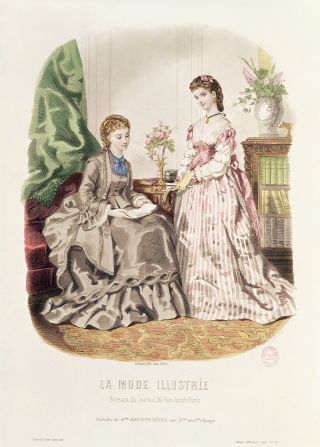
Henry James writes that Rosalind’s natural beauty was “sadly disfigured by jealousy,” when she learns that her younger sister Perdita is engaged to Arthur, the man Rosalind herself hoped to marry.
Sometime later, shortly after giving birth to a daughter, though, Perdita becomes seriously ill. Now on her deathbed, she elicits from her husband a promise to preserve for their daughter her exquisite gowns, stored in an enormous attic chest and “wrapped in camphor and rose-leaves.”
A few years after Perdita’s untimely death, Arthur eventually marries Rosalind. When Arthur’s circumstances, though, lead to their need for financial retrenchment, Rosalind remembers her sister’s “copious wardrobe” that “lay languishing in thankless gloom.” One day, impulsively, she runs to the attic and unlocks the iron-clad chest. Shortly after, her husband finds Rosalind, felled by “vengeful ghostly hands,” dead beside the opened chest (James, 1885).
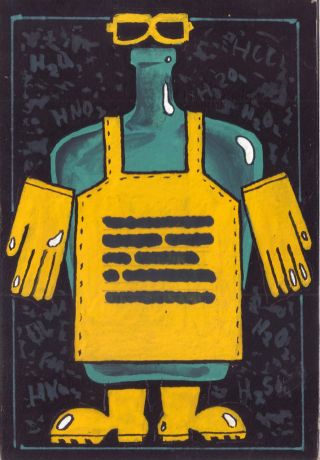
James’s gothic story, The Romance of Certain Old Clothes, is about intense sibling rivalry. Rosalind’s interest in her sister’s “old clothes” had nothing to do with sustainability, "mindful consumption," or environmental concerns, aspects of the second-hand clothing market that would come centuries later (Zahid et al, 2023). It was motivated by pure selfish acquisitiveness. Rosalind’s “inordinate love of dress” ultimately leads to her undoing.
What is it about clothing that can have such an extraordinary impact?
Clothes have provided protection from the elements and offer modesty, ever since the proverbial fig leaf of Adam and Eve.
Clothes can also adorn, decorate, and express "uniqueness and creativity." They convey identification within a specific group, social status, and personal wealth (Kodzoman, 2019). Anthropologists have found all cultures "dress" the body, whether through clothing, tattooing, cosmetics, etc (Entwistle, 2001).
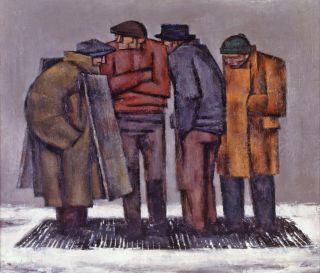
It is often from clothing that we can form our first impressions of people, including their gender, occupation, and nationality (Flugel, 1930). Clothing can represent not only who a person is, but particularly among immigrants, it can be "aspirational," i.e., who he or she wants to be, and can represent a sense of belonging and acculturation (Safdar et al, 2020).
Clothes "lie at the margins of the body and mark the boundary between self and other, individual and society" (Entwistle). But clothing is different from other aspects of body image, such as shape or even weight, as it is "to a large extent controllable" and the act of dressing represents "intentional behavior" (Tiggemann and Lacey, 2009). Clothing, of course, can be used to "camouflage" shape and weight (Tiggemann and Andrew, 2012).

Clothing, "as an intermediate between the body and the world, speaks of what the wearer wants to convey" (Richards, 1996), including a person's fantasies. Dressing up in costume, for example, in both children and adults, enables the wearer to indulge these fantasies, including enticingly sexual or even overtly aggressive ones.
And it is from clothing that some can feel considerable embarrassment and even social condemnation when they appear either over- or under-dressed for a social occasion, (Flugel; Entwistle), poignantly described in Virginia Woolf's story, The New Dress: poor, wretched Mabel, suffers "humiliation, shame, and agony" when she appeared at Mrs. Dalloway's party in her new yellow dress that was just "not right." People can use clothing not only to judge others superficially but also to assess someone's competence and credibility (Gurung et al, 2018).
Clothes can allow connection with others as they can remind us of important moments in our lives and even signify attachments to those we have loved and lost (Beckerman, 2005).
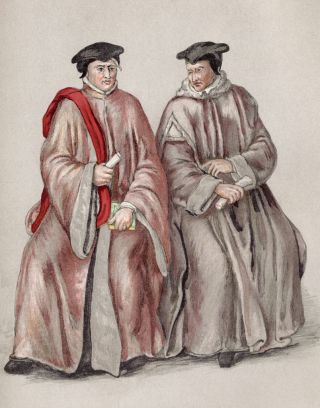
Clothing can also designate aspects of identity. Certain rights and responsibilities accompany those who wear uniforms, from deliverymen to those in the military or police. Specific elements of dress, such as the judicial robe (Kessler, 1962) or the physician's white coat (Brandt, 2003; Rehman et al, 2005; Petrilli et al, 2015; Garung et al) can engender a set of expectations for behavior in those who wear these garments or alternatively, choose not to, and in those with whom they interact (Rubinstein, 1995).
Dress codes, both formal and informal, within an organization, can have tailored meanings: They can reflect employee compliance with the rules, legitimization by nonemployees, and even the general image and values of the organization. Further, they can reflect gender, as well as hierarchal distinctions, i.e., stratified homogeneity (Rafaeli and Pratt, 1993). Most recently, both The New York Times (Jimison, 2023) and the Wall Street Journal (Epstein, 2023) have featured articles critiquing the changing dress code (sartorial revision) in the U.S. Senate (Garelick, NY Times, 2023).
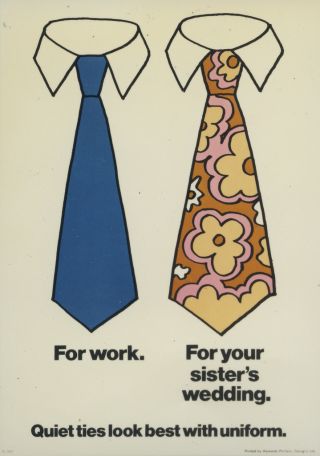
A version of the expression, “Clothes make the man” has appeared throughout literature, spoken most famously by Shakespeare's Polonius, “Apparel oft proclaims the man” (Hamlet, I, iii).
With barely any apparel remaining on his tortured, emaciated body, Winston Smith loses any semblance of humanity: he sees his clothing reduced to "filthy yellowish rags, just recognizable as remnants of underclothes" in Orwell's 1984.
Clothes provide dignity and can "transform the incomplete body into a complete cultural package" (Warwick and Cavallaro, 1998).
Nowhere is this sentiment more clearly reflected than in Mark Twain's story, The Czar's Soliloquy. For Twain's fictional czar, a leader of millions, clothes conveyed respect: "There is no power without clothes." They are “heaven’s kindliest gift to man..." Surveying his naked body as he comes from his morning bath, the czar perceptively recognizes, “There is nothing imperial…nothing imposing, impressive, nothing to invoke awe and reverence…It is my clothes. Without my clothes I should be as destitute of authority as any other naked person…clothes do not merely make the man, the clothes are the man.” (Twain, 1905)

References
Brandt LJ. (2003) On the value of an old dress code in the new millennium. Archives of Internal Medicine 163(11): 1277-81.
Beckerman I. (2005). Love, Loss, and What I Wore. Chapel Hill, North Carolina: Algonquin Books of Chapel Hill.
Entwistle J. (2001). The dressed body. In: Entwistle, J and E. Wilson (eds). Body Dressing. NY: Berg, pp. 33-58.
Epstein J. (2023). “The best and worst dressed Senators.” The Wall Street Journal, 9/28/23, A19.
Flugel JC (1930) (1971 edition). The Psychology of Clothes. New York: International Universities Press, Inc., p. 55.
Garelick, R. (2023). “What we lose when a Senator can ‘dress like a slob.' The New York Times, 9/28/23, D4.
Gurung R.A.R. et al (2018). Dressing ‘in code:’ clothing rules, propriety, and perceptions. The Journal of Social Psychology 158(5): 553-557.
James H. (1885). The Romance of Certain Old Clothes. (Kessinger Legacy Reprints).
Jimison R. (2023). “The Senate dress code gets a casual overhaul.” The New York Times, 9/19/23, A23 (National.)
Kessler R. (1962). The psychological effects of the judicial robe. American Imago 19(1): 35-66.
Kodzoman D. (2019). The psychology of clothing: meaning of colors, body image, and gender expression in fashion. Textile & Leather Review 2(2): 90-103.
Orwell G. (1949) (2003 edition). Nineteen Eighty-Four. Plume Printing (Centennial Edition), pp. 280-282.
Petrilli CM et al (2015). Understanding the role of physician attire on patient perceptions: a systematic review of the literature—targeting attire to improve likelihood of rapport (TAILOR) investigators. British Medical Journal Open 5: e006578. (18 pages).
Rafaeli A; Pratt MG. (1993). Tailored meanings: on the meaning and impact of organizational dress. Academy of Management Review 18(1): 32-55.
Rehman S.U. et al (2005). What to wear today? Effect of doctor’s attire on the trust and confidence of patients. The American Journal of Medicine 118: 1279-1286.
Richards AK. (1996). Ladies of fashion: pleasure, perversion or paraphilia. International Journal of Psychoanalysis 77(Pt. 2): 337-51.
Rubinstein RP. (1995). Dress Codes: Meanings and Messages in American Culture. Boulder: Westview Press, pp. 7-8.
Safdar S et al (2020). Clothing, identity, and acculturation: the significance of immigrants’ clothing choices. Canadian Journal of Behavioural Science 52(1): 36-62.
Shakespeare W. (1998). The Tragedy of Hamlet, Prince of Denmark, (1598), I iii, 72. The Oxford Shakespeare: The Complete Works (Wells, S and G. Taylor, eds). Oxford: Clarendon Press, p. 659.
Tiggemann M; Andrew R. (2012). Clothing choices, weight, and trait self-objectification. Body Image 9: 409-412.
Tiggemann M; Lacey C. (2009). Shopping for clothes: body satisfaction, appearance investment, and functions of clothing among female shoppers. Body Image 6: 285-291.
Twain, M. (1905). The Czar’s Soliloquy. https://archive.org/stream/jstor-25105366/25105366_djvu.txt (Retrieved: 9/28/23).
Warwick A; Cavallaro D. (1998). Fashioning the Frame: Boundaries, Dress and the Body. New York: Berg, p. 3.
Woolf V. (1924). The New Dress. North Haven, Ct. (No other information given: Purchased Amazon.com).
Zahid NM et al (2023). Exploring mindful consumption, ego involvement, and social norms influencing second-hand clothing purchase. Current Psychology 42: 13960-13974.




